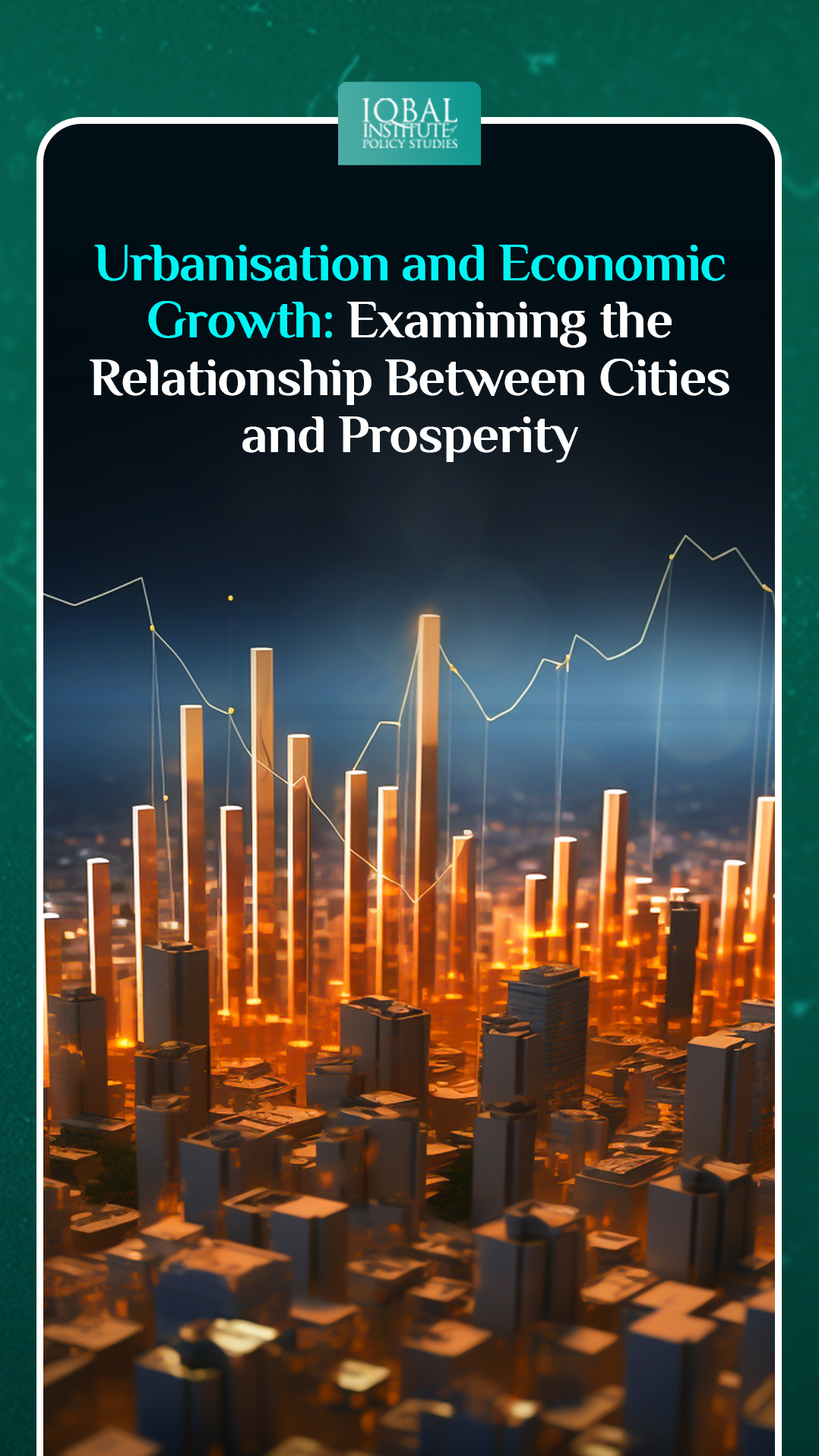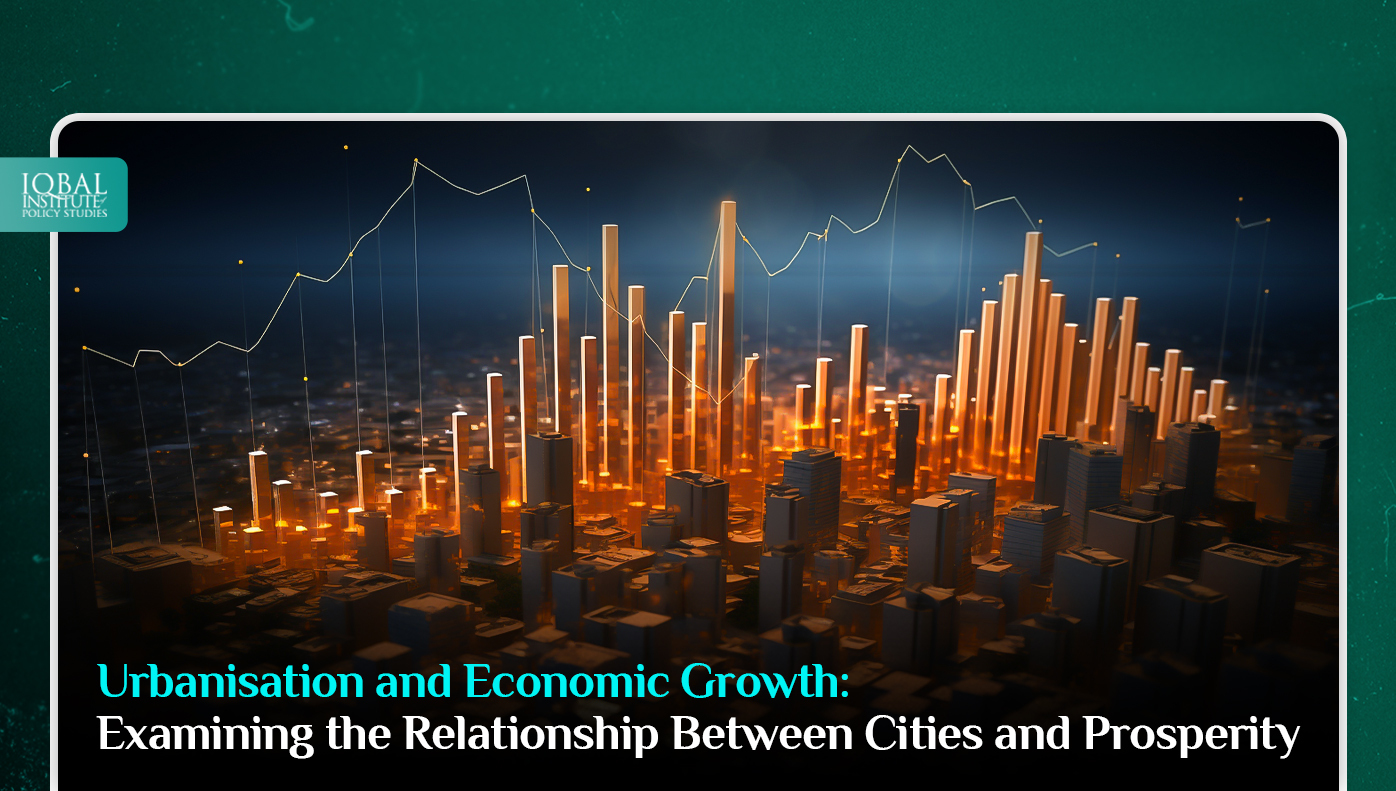Urbanisation holds a vital role in the economic development of any nation. In developed countries, urbanisation is accompanied by economic expansion and industrialization, which mutually reinforce one another. However, urbanisation in developing nations can be both a challenge and an opportunity for economic growth. On one hand, rapid urbanisation can strain existing infrastructure, leading to issues like traffic congestion, inadequate housing, and overburdened public services. These challenges can impede economic growth if left unaddressed. On the other hand, urbanisation concentrates labor, resources, and markets, fostering innovation, entrepreneurship, and industry development. Moreover, the relationship between urbanisation and economic growth is non-linear. After a certain point, urbanisation begins to inhibit economic progress. Because of the increasing concentration of the world’s population in major cities and towns in low- and middle-income nations, the relationship between urbanisation and development has emerged as a major policy problem. Therefore, strategic urban planning, infrastructure investment, and policies that ensure equitable access to opportunities are crucial for transforming urbanisation into a driver of sustainable economic growth in developing nations.
The Urbanisation Wave
Over the past few decades, a remarkable shift has occurred as people have migrated from rural to urban areas in search of better opportunities and improved standards of living. Urbanisation has led to the expansion and transformation of cities on a global scale. It is projected that by 2045, the global population of urban dwellers will have increased by 1.5 times to 6 billion (The World Bank, 2023).
Furthermore, this ongoing wave of urbanisation is closely tied to economic growth. Cities serve as centers of commerce, industry, and innovation, creating a conducive environment for businesses to thrive and economies to flourish. The concentration of people and resources in urban settings offers economies of scale, facilitates the exchange of ideas, and fosters a dynamic labor market.
Urbanization as an Engine of Economic Growth
Infrastructure and Connectivity
Urban areas boast advanced infrastructure networks that facilitate efficient transportation, communication, and trade. Well-developed roads, bridges, ports, and communication systems enhance connectivity, enabling the seamless movement of goods, services, and people. This accessibility, in turn, promotes economic activities and contributes to overall growth.
Innovation and Knowledge Sharing
Cities thrive on diversity and a concentration of minds, fostering an environment conducive to innovation. Proximity to universities, research centers, and a mix of industries encourages the exchange of ideas and sparks creativity. This knowledge-sharing leads to the development of new technologies, products, and services, which can invigorate economic progress.
Labor Market Dynamics
Urban areas attract a diverse and skilled labor force. The availability of a wide range of talents and expertise allows businesses to find the right people for specialised roles. This dynamic labor market increases productivity and innovation, propelling economic growth. With cities accounting for more than 80% of global GDP, urbanisation can contribute to long-term growth through greater productivity and innovation if properly managed (The World Bank, 2023).
Entrepreneurship and Startups
Urban environments offer fertile ground for entrepreneurship to flourish. The convergence of resources, funding opportunities, and networking platforms creates an ecosystem where startups and small businesses can thrive. This influx of entrepreneurial ventures contributes to economic diversification and expansion.
Cultural and Creative Industries
Cities often serve as cultural hubs, hosting various artistic, creative, and cultural events. These activities not only enrich the city’s identity but also generate economic value through tourism, entertainment, and creative outputs. The arts and creative industries contribute to economic growth by fostering a unique urban atmosphere.
Concentration of Economic Activities
Urban areas concentrate on economic activities, from finance and industry to services and technology. This concentration facilitates efficient resource allocation and specialisation, leading to increased economic productivity and competitiveness on both regional and global scales.
Infrastructure Investment and Urban Renewal
Governments and private entities invest in urban infrastructure, creating jobs and spurring economic growth. Urban renewal projects, such as revitalising abandoned areas, not only enhance the urban landscape but also contribute to economic activity and job creation.
Accessibility to Markets
Cities offer access to diverse markets and a larger customer base. This accessibility allows businesses to scale more rapidly, leading to increased production, sales, and revenue.
Knowledge Clusters and Research Centers
Urbanisation leads to the formation of knowledge clusters and research centers, which attract intellectual talent and foster innovation. These centers drive scientific and technological advancements, contributing to economic growth through the creation of new industries and opportunities.
Challenges of Urbanisation
While the benefits of urbanisation are undeniable, it is essential to acknowledge the challenges that come hand-in-hand with rapid urban growth.
Infrastructure Strain
As urban populations grow, the demand for infrastructure outpaces supply. Issues like traffic congestion, inadequate housing, and strained public services can arise, impacting the quality of life and potentially hindering economic growth. For example, delivering healthcare services to millions of people in a megacity can be a challenging endeavour, especially when resources are restricted or medical personnel is in short supply.
Inequality and Social Disparities
Urbanisation can exacerbate inequality, with disparities between different socio-economic groups becoming more pronounced in cities. Access to education, healthcare, and job opportunities might not be equitable, leading to social tensions and potential unrest.
Environmental Impact
The concentrated nature of urban areas can lead to environmental challenges, such as pollution, waste management, and increased energy consumption. For instance, urban areas contribute to more than 70% of worldwide CO2 emissions, primarily stemming from industrial operations and motorized transportation heavily reliant on fossil fuels (World Economic Forum, 2022). These systems are underpinned by extensive carbon-intensive infrastructure constructed with materials that further amplify their environmental impact. As urban areas expand, global material consumption is projected to increase from 41.1 billion tonnes in 2010 to approximately 89 billion tonnes by 2050 (World Economic Forum, 2022). Balancing economic growth with environmental sustainability is a crucial consideration for urban planners.
Housing Affordability
The demand for housing often outstrips supply in rapidly growing cities, leading to skyrocketing real estate prices and housing affordability issues. This can force lower-income populations to live in suboptimal conditions. Nearly 1 billion urban poor reside in informal settlements. Additionally, urban areas bear the brunt of conflicts, with over 50% of forcibly displaced individuals seeking refuge within cities (The World Bank, 2023).
Strategies for Harnessing the Economic Potential of Cities
To ensure that urbanisation leads to sustainable economic growth and prosperity, various strategies can be employed:
Investment in Infrastructure
Governments and private entities should invest in upgrading and expanding urban infrastructure. Efficient transportation systems, reliable utilities, and accessible public spaces contribute to the overall economic vibrancy of cities.
Education and Skill Development
Providing quality education and skill development opportunities ensures that the urban workforce remains competitive and adaptable. This contributes to both individual prosperity and overall economic growth.
Inclusive Urban Planning
Urban planners should prioritise inclusivity in their designs. Affordable housing, accessible public services, and efforts to bridge social gaps can create a more equitable urban environment.
Promotion of Innovation Ecosystems
Cities should actively support innovation and entrepreneurship by fostering collaboration between academia, industry, and startups. Incubators, accelerators, and funding opportunities can nurture a thriving innovation ecosystem.
Environmental Sustainability
Incorporating green infrastructure, sustainable transportation options, and eco-friendly practices into urban planning can mitigate the environmental impacts of urbanisation.
Conclusion
The relationship between urbanisation and economic growth is complex, with cities serving as both catalysts for prosperity and recipients of its challenges. While urbanisation offers unparalleled opportunities for economic expansion, it also requires careful planning and management to ensure that the benefits are accessible to all and that the environmental and social costs are minimised. Through strategic investments, inclusive policies, and sustainable practices, cities can continue to be engines of economic growth, innovation, and improved quality of life for their residents. Balancing urbanisation’s potential with its challenges is key to creating a future where cities thrive and contribute to the overall well-being of societies worldwide.
References
Bibliography
The World Bank. (2023, April 3). Urban Development. Retrieved from https://www.worldbank.org/en/topic/urbandevelopment/overview
World Economic Forum. (2022, April 26). This chart shows the impact rising urbanization will have on the world. Retrieved from https://www.weforum.org/agenda/2022/04/global-urbanization-material-consumption/
This article is written by Haneen Gul. Haneen is a research analyst at the Iqbal Institute of Policy Studies (IIPS).



Leave a Reply